 The most convenient method of travel around Metro Manila is by taxi. They are cheap and there are certainly plenty of them. Let it also be said that most are usually quite decent and fair and do as they should by putting the meter on before they drive off with you on board. They also take you to your destination via the shortest route, are polite and I cannot say enough good to credit these guys.
The most convenient method of travel around Metro Manila is by taxi. They are cheap and there are certainly plenty of them. Let it also be said that most are usually quite decent and fair and do as they should by putting the meter on before they drive off with you on board. They also take you to your destination via the shortest route, are polite and I cannot say enough good to credit these guys.
Taxi travel in Metro Manila can most definitely be problematic at the best of times. There are many things you need to be aware of when riding in taxis. But at the risk of overplaying a point, I want to ask readers to remember the good ones before we jump into an “all of them” type of discussion. It is not all of them that do wrong.
It has to be faced though that many of them are simply awful and have dirtied the name of a noble profession. I find it so sad that minorities always blacken the reputations of the majority. Unfortunately, some of the characters that call themselves taxi drivers have done a major disservice to the many decent ones whom often get tarred with the same brush. It’s time to give a little praise to the ones nobody talks about.
I say this because most times, I have few problems with taxi drivers. I never share stories with friends about how good the driver was nor comment about his politeness.
However, when you get a bad one that attempts to set an inflated price and refuse to put on the meter or take you on a detour to maximize the fare, then that always becomes a talking point. We tend to forget the good ones.
You only have to stand on the curbside in most locations for a short while, and it probably won’t be long before one comes along with the overhead light on meaning he is unoccupied.
I have ridden in brand new taxis with much appreciated air-conditioning as well as some older beaten up ones with air-conditioning that doesn’t seem to be working as well as doors or windows that won’t open. Whether old and beaten up or new, it’s noticeable that most of the drivers keep the interior clean.
The majority of the drivers are quite friendly and competent in English. I cannot honestly say that most are great drivers unfortunately. Taxi drivers are among the worst of all drivers in Metro Manila (in my opinion). There are many taxi companies and most are credible.
The ones to watch for are listed here. If you require a taxi for a longer period of time, you can negotiate and get a fixed price and use them for the morning, afternoon or all day should you require it. Likewise going out-of-town can be arranged at a negotiated rate.
Taxis are without doubt the easiest way to get around, especially if you’re a visitor here. The biggest asset is the sheer volume of them. However, it is important you don’t be too casual about riding in taxis.
Taxi’s the Bad
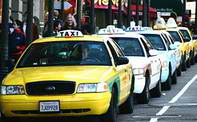 I stand by my comments regarding most taxi drivers being not so bad and we should not forget that. But again, we are in territory where certain things have to be said. Some Metro Manila taxi drivers are totally beyond the limit. It also seems that little is being done about it.
I stand by my comments regarding most taxi drivers being not so bad and we should not forget that. But again, we are in territory where certain things have to be said. Some Metro Manila taxi drivers are totally beyond the limit. It also seems that little is being done about it.
I know I am very much not alone in my thinking. It’s not just outsiders that think it, Filipinos do, too. Not many have kind words for taxi drivers in Metro Manila. That is somewhat unfair sometimes as I find many to be just fine, but when they are bad, they are bad; and it stays in your head to the extent that the good guys are forgotten.
There have been times I could simply beat one of them to death with a soft toy out of sheer annoyance and frustration. I should now set out to explain why I’m starting to sound a little deranged and explain my murderous statement.
Now, unless I am misinformed, part of their remit as a taxi driver is to take passengers where they want to go within Metro Manila. In fact, on many of the taxis, you see written “to anywhere in Luzon”.
Now I can understand that some may have a problem with going out of the metropolis, but it seems that many of them only want to operate within their locality, and seem to fail to understand that a taxi service is about taking people where they want to go, and not where the driver feels he should stay.
They directly turn you down if you want to go further than a couple of kilometers and unbelievably say, “too far”.
First off, how do you make a living by only going within a couple of kilometers? You are a taxi driver, then be a taxi driver and actually take the passenger where he wants to go. It is not supposed to be just about them. They should offer a service for the customer that they actually expect from a taxi driver. Why on earth would you be one if you were not prepared to do that?
Sadly, this is common thinking with many individuals that are running a business in the Philippines. They seem to fail to recognize that if you offer a service, you are offering that service for the client; it is not just about you as a provider. If you’re not providing anything near the service a customer expects, then give up your taxi and sell bananas.
This is an all too common conversation with taxi drivers here in Metro Manila. It goes something like this, “Take me to Quezon City,” I would say. So if I’m in such as Manila itself, that means you want to ride approximately 8 to 10 kilometers. The taxi driver will reply, “Too far.”
Somewhat bemused by this response, I will say, “What do you mean too far, you’re a taxi, aren’t you?” The second reason they give you is, “Oh, traffic,” too which I cannot control my sarcastic instincts, and reply “So you’re a taxi driver, so you should know even better than me that Metro Manila is always traffic, so what exactly do you mean?”
Usually, at this point, they don’t know what to say anymore and simply resort to saying “No, I’m not going there,” and wait for you to get out. I usually oblige and cannot resist out of sheer disbelief uttering a few expletives on my way out. I, then, look for someone who actually wants to be a taxi driver instead of just going ’round the corner patrolling his own neighbourhood.
If I am able to get any kind of explanation, they usually say, “I don’t make anything coming back.” Well, for me as an ex-courier driver, I really cannot understand their logic. If they are over the other side of the city after dropping you, well they’re a taxi, aren’t they?
Isn’t it a given that you pick up your next ride near to where you dropped off your customer? There are so many places they can go nearby where they will pick up another ride. This is how you earn a living, I would have thought. Eventually, you will find yourself back nearer your own area, and then you go home.
How on earth can you call yourself a taxi driver if you’re only prepared to take people no further than the smell of the abobo your wife is cooking? That’s the logical way to make a good living from driving a cab I would have thought, and that way you don’t have to waste fuel with an empty cab and you can collect far higher fares than by just going round the corner.
Then they tell you that it’s hard to make a living driving a cab. I’m not surprised with that attitude but they won’t see the logic of what I just said so I’m wasting my time ever trying to tell them, I’ve tried.
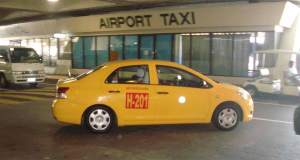 On a bad day, you may encounter 3 or 4 of these before you find one that actually is aware that he is a taxi driver and they are supposed to drive wherever you want to go. They operate as if it is for their convenience and not yours. Take a deep breath and just let him go.
On a bad day, you may encounter 3 or 4 of these before you find one that actually is aware that he is a taxi driver and they are supposed to drive wherever you want to go. They operate as if it is for their convenience and not yours. Take a deep breath and just let him go.
Unfortunately, this is not the worst of the sins of certain Metro Manila taxi drivers. So you have found one quite happy to take you where you want to go. So now it is time to try their luck and take maximum advantage with lines such as “Oh, that’s far!” when you state your destination and then proceeds to give you an inflated price.
The justification for this is the old one “Oh, traffic!” What he is really trying to do is take you without using the meter, which gives him the opportunity to inflate the price, sometimes by a huge amount compared to what the fare would be if it was metered.
The next trick is to simply not put on the meter. The intention being when they arrive at your destination, they are going to ask some outrageous amount, and think you are simply going to pay it.
I had one driver once who set off with me on board and didn’t put on the meter. I said, “Can you please put on the meter?” He pretended not to hear me and continued to drive. I again said, “Hey, you haven’t put on the meter yet.” Again, he pretended to not hear me and then even started speaking on his phone disregarding my request for the meter to be put on. Somewhat annoyed by his antics I decided that I should use it to my advantage and also to teach him a lesson for being so underhand. I patiently waited for him to finish his fictitious phone call and said to him, “I have asked you several times to put on the meter, so I will tell you what, whatever it says on the meter when I get out is what I shall give you, as it’s not on, that means nothing.” Faster than a speeding bullet, he put on the meter, and I got the first 1 and a half kilometers for free so I had the last
laugh.
Never allow them to not put on the meter. If he won’t put it on, get out and if possible take down his details and report him. His details are written on the inside of the door. Take it all down and call the LTFRB (Land Transportation Franchising & Regulatory Board) that handles customer complaints against any public utility within Metro Manila.
Some will even say, “Meter is not working!” If it’s not working then he should be having it repaired and not working until it is, so he is lying, and so again, get out.
The fun may not be ended yet as there are other little tricks, and one of them is very difficult to avoid if you are a stranger in town. Despite the fact that many of them don’t want to go much further than round the corner, when they do take you, they want to go all around the capital to go somewhere 5 kilometers away. Yes, the unrequested tourist route is the next possible problem.
Being fully aware that you don’t have much idea about where you are and don’t know much about Metro Manila, they take you on a joyride to put the maximum on the meter trying to prolong the ride.
Avoiding this isn’t easy as how do you know if he is going the super long way round or not. I’m sure this trick isn’t unique to Metro Manila, I imagine it’s something taxi drivers all over the world have done at some time, but there are some here that take it too extremes.
I wish the more negative aspects of traveling by taxi were finished here, but unfortunately I have one more thing I have to warn you about. Something I was almost a victim of myself.
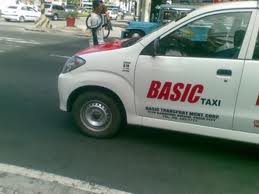 On rare occasions, you may find yourself subjected to a little magic. This is the name given to a little device that some taxis have which manually moves the meter by clicking a little handheld button. This is something they are more likely to use on a foreigner in the belief you are not aware of the rate that the meter clicks up a few pesos. Every time they click the button, the meter increases.
On rare occasions, you may find yourself subjected to a little magic. This is the name given to a little device that some taxis have which manually moves the meter by clicking a little handheld button. This is something they are more likely to use on a foreigner in the belief you are not aware of the rate that the meter clicks up a few pesos. Every time they click the button, the meter increases.
My good fortune was due to the fact I had recently seen a feature on local TV all about the taxi drivers magic button. I took a taxi to Coastal Mall in Parañaque from Manila.
He may have gotten away with it if it wasn’t for his own stupidity. Not too long after I got into the taxi and told him where I wanted to go, I dozed off. For some reason, he never used his magic button to increase the fare on the meter whilst he had his best opportunity. I was happily sleeping and when I woke, I observed the meter, and it was displaying the amount I would have expected for the distance we had covered.
As we got closer to Coastal Mall, we hit traffic. As we approached the heavy traffic, I took another peek at the meter and again nothing seemed wrong, the amount was still what I had expected. As we were stuck in traffic, I observed the meter, a little anxious that being delayed would make the ride all the more expensive.
I saw the meter jump up a little and watched as it kept on jumping at a rate that suggested we was going at around 100 kilometers an hour. I kept observing the meter going up yet we were virtually stationary. He managed to add around another 150 pesos in a matter of minutes, and we weren’t even moving.
Being aware of magic, I observed his thumb. I noticed, he kept clicking something discreetly in his hand and every time his thumb moved, the meter would jump up. I straight away knew what was going on.
I decided to say nothing at this point and just watch. He continued to click away almost doubling the fare and all in stationary traffic.
When we reached Coastal Mall, he looked at his meter and told me the amount. I replied, “Are you sure about that fare, kuya (Older Brother in Tagalog), as I couldn’t help but notice your meter was going a little crazy when we were stuck in traffic!”
I didn’t have to say any more as he went into a little panic, became nervous and to avoid a problem for himself, quickly said, “Never mind what’s on the meter, call it 150 pesos!” which was even less than I expected to pay. I simply replied “now that’s more like it isn’t it”, paid him the 150 and got out.
So unfortunately it’s far from joyous every time you get into a taxi in the capital. With most, you won’t have such problems, but with far too many, you will.





 I have often thought what a difficult job it must be to be a comedian in the Philippines as they have a particularly amusing habit of having to announce a joke. When you’ve asked questions and got to the bottom of it, it’s again just one of those things which is easily explained and many of the assumptions as to why this is are not what they seem. Allow me to be a little clearer.
I have often thought what a difficult job it must be to be a comedian in the Philippines as they have a particularly amusing habit of having to announce a joke. When you’ve asked questions and got to the bottom of it, it’s again just one of those things which is easily explained and many of the assumptions as to why this is are not what they seem. Allow me to be a little clearer.
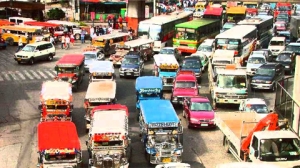



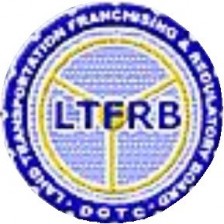
 The most convenient method of travel around Metro Manila is by taxi. They are cheap and there are certainly plenty of them. Let it also be said that most are usually quite decent and fair and do as they should by putting the meter on before they drive off with you on board. They also take you to your destination via the shortest route, are polite and I cannot say enough good to credit these guys.
The most convenient method of travel around Metro Manila is by taxi. They are cheap and there are certainly plenty of them. Let it also be said that most are usually quite decent and fair and do as they should by putting the meter on before they drive off with you on board. They also take you to your destination via the shortest route, are polite and I cannot say enough good to credit these guys. I stand by my comments regarding most taxi drivers being not so bad and we should not forget that. But again, we are in territory where certain things have to be said. Some Metro Manila taxi drivers are totally beyond the limit. It also seems that little is being done about it.
I stand by my comments regarding most taxi drivers being not so bad and we should not forget that. But again, we are in territory where certain things have to be said. Some Metro Manila taxi drivers are totally beyond the limit. It also seems that little is being done about it.  On a bad day, you may encounter 3 or 4 of these before you find one that actually is aware that he is a taxi driver and they are supposed to drive wherever you want to go. They operate as if it is for their convenience and not yours. Take a deep breath and just let him go.
On a bad day, you may encounter 3 or 4 of these before you find one that actually is aware that he is a taxi driver and they are supposed to drive wherever you want to go. They operate as if it is for their convenience and not yours. Take a deep breath and just let him go. On rare occasions, you may find yourself subjected to a little magic. This is the name given to a little device that some taxis have which manually moves the meter by clicking a little handheld button. This is something they are more likely to use on a foreigner in the belief you are not aware of the rate that the meter clicks up a few pesos. Every time they click the button, the meter increases.
On rare occasions, you may find yourself subjected to a little magic. This is the name given to a little device that some taxis have which manually moves the meter by clicking a little handheld button. This is something they are more likely to use on a foreigner in the belief you are not aware of the rate that the meter clicks up a few pesos. Every time they click the button, the meter increases.
 To give you a fuller picture of what I’m talking about, I will give an account of how it used to be.
To give you a fuller picture of what I’m talking about, I will give an account of how it used to be.  The rules and changes are in their infancy still, but at last they know they had to do something. The MRT took the lead and a little later, the LRT was playing their part, too, although it would appear that although the MRT line began the initiative, they haven’t quite managed the implementation as well as the LRT. The first thing the MRT did was to paint a yellow box positioned where each door of the train stops. Not long after, the LRT did the same. The idea being that people are supposed to not enter the yellow box until those wanting to exit the train was all off. In short, it’s being much better implemented by the LRT lines; MRT improvements in enforcing discipline seems to be not working too well, but let’s hope that is addressed soon.
The rules and changes are in their infancy still, but at last they know they had to do something. The MRT took the lead and a little later, the LRT was playing their part, too, although it would appear that although the MRT line began the initiative, they haven’t quite managed the implementation as well as the LRT. The first thing the MRT did was to paint a yellow box positioned where each door of the train stops. Not long after, the LRT did the same. The idea being that people are supposed to not enter the yellow box until those wanting to exit the train was all off. In short, it’s being much better implemented by the LRT lines; MRT improvements in enforcing discipline seems to be not working too well, but let’s hope that is addressed soon. 



